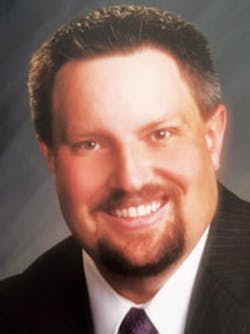OR and EVS: Working with, not against, each other
When Environmental Services (EVS) struggles to clean, disinfect and turn rooms over as quickly as the Operating Room demands, it can cause a lot of stress and friction between the two departments. However, some teams are finding ways to meet on common ground and solve problems. Like most interpersonal encounters, successful healthcare teams know that mutual respect, with clear and consistent communication, are what creates the foundation for lasting harmony. Here’s what some Association for the Healthcare Environment (AHE) members have to say about joining forces to reach common goals.
In my opinion, this is one of the most important relationships that an EVS leader needs to make in the hospital. We have created a great partnership with our OR teams and we partner together to ensure that the proper cleaning is taking place. We have created check-off sheets together and work lists to ensure that we know who is cleaning what and who is in charge of what. We partner in training and the quality review process as well. Our EVS managers do QR’s but the charge nurses will do them as well. We learn from each other and work together to ensure that the environment is clean and safe and does not contribute to SSI’s. This takes time and energy to make this happen but our joint checklists and work lists makes sure that we do not miss anything. Our OR teams are great and committed to patient safety and they see our EVS techs as a vital part of ensuring that safety.
OR leadership works collaboratively with EVS and the collaboration is more important than ever. The requirements in the sterile environments have changed (for the right reasons) and both EVS and OR leaders are having to step-up their game. We complete monthly rounds in all eight of our OR settings and SPD with EVS, OR Leadership and Infection Prevention and it has fostered very positive relationships. It is a lot of work, however it’s extremely worthwhile!
Depends on the facility; often the OR will look down on EVS staff but I have also seen facilities that drive a culture of improvement and caring for others. Ambulatory surgery centers are looking for professional terminal cleaning at a higher rate than ever before; previously facilities would hire janitorial companies without healthcare training including terminal cleaning. Technology and communication improve department relations, visible monthly rounds and meetings between the two department leaders improve communication and show unity from the top down. Implement a regular cadence of communication between multidisciplinary teams, cross-attend department huddles and meetings. Solutions include: setting clear expectations in communication, achievable tracked goals with scorecards, scheduling availability, and providing necessary resources for setting departments up for success.
OR leadership wants assurances that the area is properly terminally cleaned at the end of the day, and EVS leadership often wants to reassure that this is done, but without a way to validate other than documentation often there is tension. Especially if something is missed or seen to be out of place. Ultimately both are working in the best interest of the patient, and with frequent communication the relationship is often strong. When EVS is responsible for the turnover of rooms there is often a push-pull on speed vs. quality. OR cases require quick turnover, and the case load can differ daily so at times the staffing needs aren’t being meant causing tension, but with communication and an EVS leader who has the foresight and budget to adjust based on case load, this can be alleviated by being proactive, and having frequent communication.
OR-EVS relationships are crucial for proper patient throughput. From what I’ve seen, OR leadership looks at our EVS personnel as an extension of their department. They work hand in hand together throughout the day and treat our employees very well. This allows for great morale between the two departments creating strong retention and a low turnover situation.
About the Author

Valerie J. Dimond
Managing Editor
Valerie J. Dimond was previously Managing Editor of Healthcare Purchasing News.





